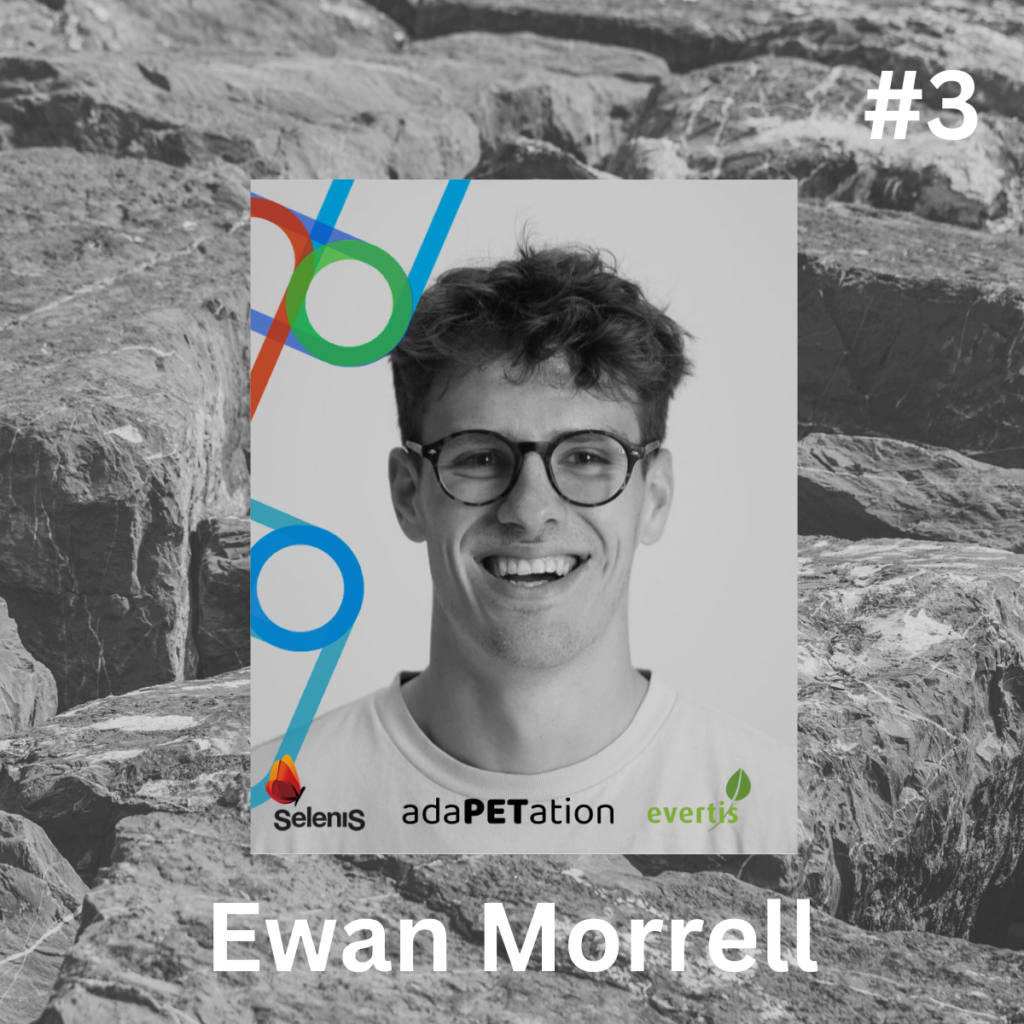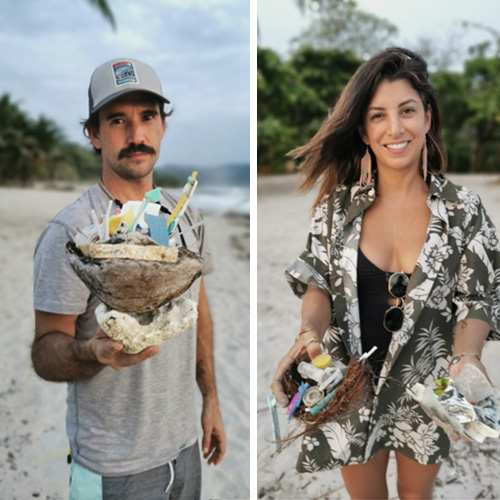
Our third PET Hero is Ewan Morrell, an industrial design student from the United Kingdom who has created the BOT lifejacket, which is designed to recycle PET bottles and waste fabrics to save lives in Bangladesh.
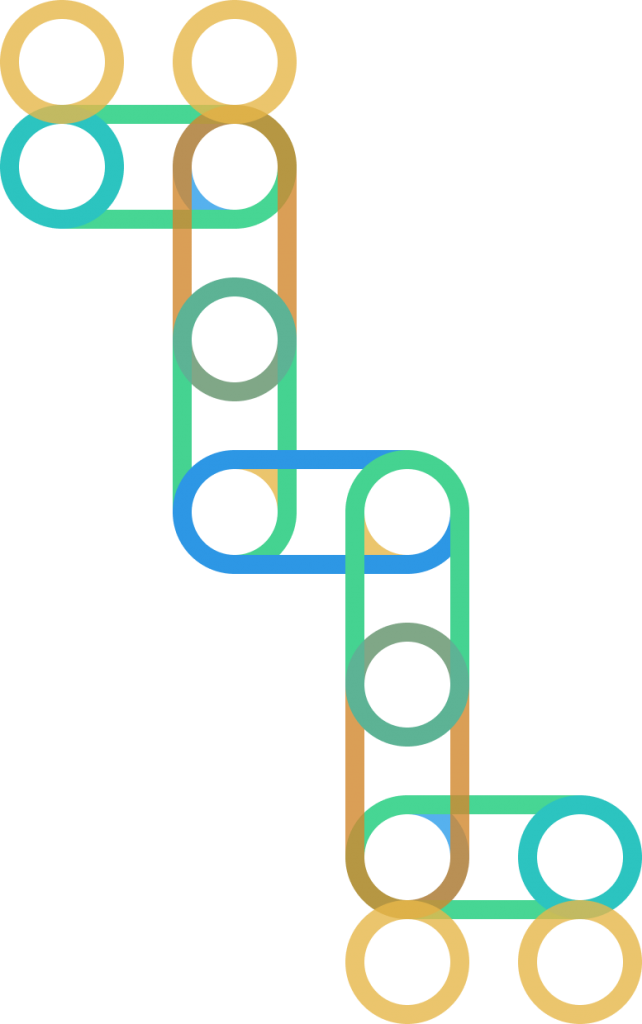
The latest of the AdaPETation Network’s PET heroes is Ewan Morrell, a student of design at Northumbria University. His final year project – The BOT Life Jacket – was featured at New Designers in London. The easy and cheap to produce lifejacket uses discarded PET bottles to save children’s lives during monsoon season in Bangladesh. It’s a wonderful initiative that brings together reciprocity, circular and regenerative design and is very worthy of its entry into our shortlist of 12 PET heroes for 2023.
This is an abbreviated version of an interview with Morrell that can be heard by clicking on the link above (or below).

AdaPETation: So could you just share with us your light bulb moment for the life jacket?
Ewan Morrell: So for our final project, we got to pick anything we wanted to do, anything we’re interested in, and create a project around that. And I’ve always had an interest in creating products that provide aid to people affected by natural disasters or people less fortunate. So I kind of tried to relate this project back to things that happen around me. So where I’m from in the UK there’s a lot of flooding and it happens annually. Like I remember when I was younger, the place that gets flooded is where I play rugby and the flooding had reached the top level of goalposts, which is like two and a half meters, nearly three meters high. And it’s quite ridiculous. And I’d be driving past as a kid and there’d be cars fully submerged, which for England is quite weird considering we don’t have any like Monsoon Seasons or anything. So I was looking at flooding that happens around the world and like where’s most affected by it? And I came across the monsoons that happen in South East Asian countries and how bad they are. And what caught me most was the flooding that happened in Bangladesh. It’s such a massive crisis and I wanted to try and create something that would be a solution to it because it takes so many lives each year. And that was why I really liked my attention. I really wanted to focus on that. So that was where I got to and then I had all my uni. Yeah. While speaking to professionals working on designs and stuff. And then eventually I came to a product that used like. Waste plastics that were commonly available to everyone to make a life jacket. And that’s how I got to it, really. Just all the research compelled me to make this.
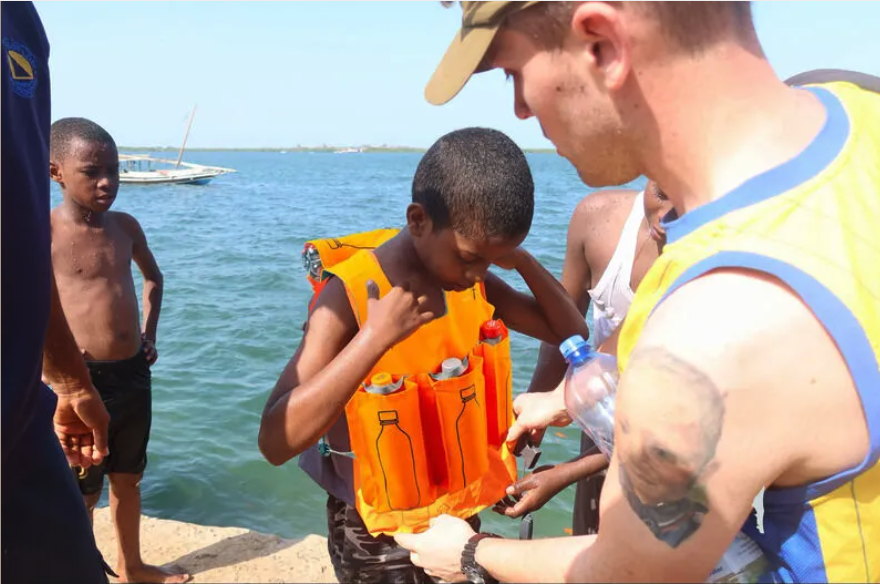
AdaPETation: Was there a particular moment when you thought, this is great? You know, I love this idea. And what was that? And perhaps share that with us?
Ewan Morrell: Well, I went through a lot. I went through a lot of different design-like solutions. I came up with about 20 different solutions for this. But speaking to experts from the RNLI, they kind of pushed me towards this. And I guess when I kind of came up with the sketch and the idea, I guess it just I was like, this is actually a viable solution because I tried to make it so that people could make it themselves, make it as kit, try to make swimming aid, tried to make life jackets out of other things like food packaging and stuff. But then when I came to this, I just saw it and I was like, Yeah, that’s, that’s what I’m going for. And then I tested it and it worked. I was like, This is definitely the one.

AdaPETation: Talk to us a little bit about the solution that you’ve come up with and the problem that you’re trying to solve?
Ewan Morrell: Yeah. So what? Life jacket. It’s a life jacket made from waste materials from the fashion industry. So the fashion industry has massive rolls of materials which they print with. They like to cut their templates for their clothes out of. And within all of these, they always have waste material. They have quite a lot of it. So at the moment, from the companies that I spoke to, they either sell it, offer insulation or use it in their boilers as a fuel kind of method. So my whole project, The Life Jacket, is instead of using it as fuel, which is bad for the environment or insulation which isn’t getting the most out of it. They take these materials and they make a life jack out of it, but it’s got to be transportable. It’s got to be able to get to them. So with this life jacket, it doesn’t have any foam insulation or buoyancy. So it can roll up to the size of a 500 mil plastic bottle, which makes it so transportable. It means that it can get anywhere quite easily. And then. There’s always the massive problem of plastic waste everywhere you go. Like if you walk down the street, you could find a plastic bottle no matter where you are in the world. So I thought, why not use that to my advantage and use that as the buoyancy aid. So it uses four plastic bottles, three are inserted on a chest and one is on the back of the neck. And from that it can provide buoyancy to a child weighing up to 40, 50 kilos. So yeah, so that’s the life jacket. And the problem that I’m trying to solve is in Bangladesh, especially not just Bangladesh, but a lot of Southeast Asian countries. When monsoon season hits, the flooding is catastrophic. And I’ll target Bangladesh because that was my focus point there alone. It affects 7.2 million people a year, which is ridiculous. And it leads to the deaths of 19,000 people annually and 80% of them are children and they’ve died from drowning. So. That’s where the whole aim of the project is. It’s preventing these children from drowning because 40 to 50 children that are drowning a day is ridiculous. No matter where you are in the world, it’s shocking. And a lot of these children are drowning within 20 meters of the home because they’re not supervised. So the whole life jacket is something that the parent could put on the child whilst they’re out doing whatever. And then if the child does fall in the water, the lifejacket corrects them and supports them so that they can be in the water, supporting it long enough for them to get help. But yeah, the lifejacket is meant to be a cheap and effective solution which can be provided easily to them. So then like the plastic bottles, everyone’s got them, they can be found anywhere. So that’s the buoyancy. And then the lifejacket being provided from these massive companies. It’s a charitable project from them and yeah, it’s just a good solution, I think.
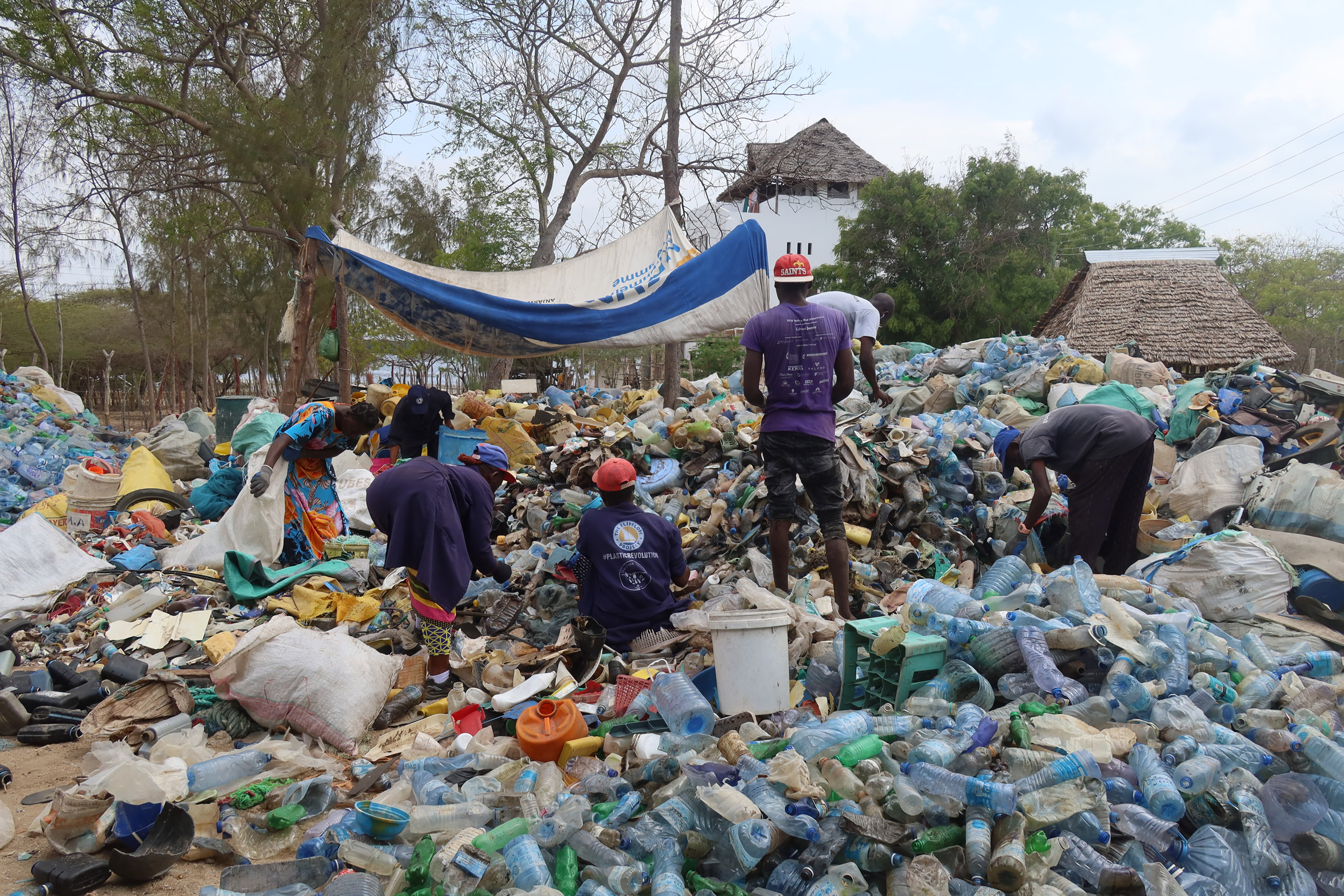
AdaPETation: What is it about the problem of waste or plastic pollution that moved you to kind of try and incorporate that into your design?
Ewan Morrell: Yeah. So obviously plastic pollution is such a massive problem. And in my research, I found that more than 380 million tons of plastic has been wasted the last year alone, which is, quite frankly, shocking. So much so that, like, drove the whole project, like looking at these waste materials and looking at waste plastic and how they could be put together to provide a solution. So I explored many ideas. I wasn’t just looking at using lifejackets at the start. I originally had an idea which revolved around reusing food packaging. So say you’ve got food that comes in a sack. How could that be redesigned to make a lifejacket? So once you’re done with the items inside, you just roll it up and it becomes airtight. So I just looked a lot like how? But we could use these waste products to make a solution because they’re not going to be able to afford a life jacket because it’s too expensive. So I was looking at how waste items could be used to make this life jacket. But when I came to the plastic bottle point I would set in my studio, I’d hit a brick wall of design. I didn’t know what I was doing, and I sat there looking at my desk and there were three plastic bottles just lying there. And I went around the studio and I found another five and I was like, This is a lot of plastic waste. We’re a producer. I’m not proud of it. I’ve moved on from that. But then I went and put bottle bins around the studios on my floor saying, Please put plastic bottles. And within two days I’d got like 40, 50 bottles. And I was like, That’s ridiculous that I can get that here so easily. And then I was starting to think like in these countries, they don’t have effective water for water filtration systems. So they’re all drinking bottled water anyway. So why couldn’t, why couldn’t they use them in life jackets?

AdaPETation: How do you think design can help us to transition to a new or a better world?
Ewan Morrell: It can be done in so many ways through design and like it doesn’t have to be physical or environmental. It can provide equal opportunities to people of different backgrounds. Obviously, there is such a massive problem with plastic waste at the moment and this can be done so simply. Like some of my mates on my course, they designed their products to not use any plastics. One of them designed it to be. It was a drill that used a full recycled cardboard handle, but done in the proper methods. It was just as durable as a drill. So it’s all these tiny little things that if they’re focused on enough, they can be changed to fully make a better place. But. Yeah. As long as the product helps one person or the design method helps one person or anything. I feel like it will make the world a better place. So it’s all about materials, the people and the process that can fully change the world really.

AdaPETation: What obstacles or challenges do you currently face to be able to offer this solution at scale.
Ewan Morrell: I’m still doing this long side of just general work. I would love to be able to take it further, but since I’ve left university, I don’t have the facilities to carry it on really unless I buy a sewing machine at the moment. But money’s a bit tight, so I can’t. But the biggest challenge is getting these companies to agree with what I’m doing. So I’ll speak to Primark and they currently don’t have any projects like giving back to the communities that are affected by this, even though they have so many factories in these countries. So pretty much the biggest challenge is getting these companies to come on board really. But once they do, it’s such a simple manufacturing process and easy. Easy project to make that like there wouldn’t be many boundaries. It just needs that first step from them to get taken off really. But yeah, because the manufacturing costs are simple. It’s just a sewing machine, whatever scrap materials there are and a pair of scissors. The distribution is a little bit more complicated, but it’s still very simple. It could easily be sent out to all these different communities. And if you just had a foot by a square foot box, you could probably fit about. 50 to 100 life jackets in. And that would be enough to last so many people because they could be shared between households and yeah. So pretty much the only challenge at the moment is getting these companies on board.

AdaPETation: What was the final material that you used? And how much did each one cost to produce?
Ewan Morrell: I don’t actually know any of the materials because I try to take on the mindset of these companies with my final life jacket. So what I did was I went up to the fashion floor in my building, went in their scrap bin, just picked out a bunch of materials out of it and then made it. So if I can find one of them in a second. Yeah. So. All right, I know some of them. So this is color one. It’s got calico on it, which is just like a basic material for modeling your ideas. It’s got corduroy pockets. Well, I don’t know the exact materials, but a lot of it is just like scrap materials like this, just cotton, like, really fit and cotton, and it’s just to show that it could be made out of anything, really. So yeah, I wish. I wish I did know the materials, but I just thought it would be better to make it like it would be made in a factory. So I just went and took a handful of these materials and just made it from that really.
AdaPETation: So how do you envisage this growing or scaling from here?
Ewan Morrell: So it would be quite easy to just sell the pattern on to one of these companies because. They could manufacture them so easily. Like it took me about 3 hours to manufacture and I’m the most untrained person on a sewing machine ever so handed. But someone who’s actually trained could probably not be out in an hour or two. So they could like I would ideally want to put it as an open source thing for these companies to just download and manufacture themselves and then they could ship out there. I was talking to people from Primark about it. They were some of my validators for my project and they really liked the idea of whether they’d take on or not, I don’t know. But they currently don’t have any projects going on to improve the lives of these people in these countries. So I don’t see why they couldn’t, but I would love to be able to take it forward. Even if it was myself doing it. I could I’m sure I could get to the point where I was making multiples a day and I could bring on some people that would help me make it, but. I would love to be able to take it forward because I think it’s such a big issue and it could be solved so easily. To an extent it could reduce the amount of people dying. Like so effortlessly. But the fact that nothing is being done by the people with money in these countries, it kind of is a bit shocking. But I would love to take it forward..
AdaPETation: As part of the project have you looked at the cost of setting up production?
Ewan Morrell: I can’t imagine it would be too much because it’s. If it all went to plan and the materials are all sourced from these massive companies after that, all it is is a sewing machine pretty much, and then delivery and stuff. But I mean, I don’t I couldn’t imagine it costing too much.
AdaPETation: Talk a little bit about the response you got at the show?
Ewan Morrell: It’s a bit overwhelming, to be honest. This project is getting displayed in Dezeen, AdaPETation Away magazine, which is a Portuguese magazine, Beautiful News, which is a South African magazine. And. The Red Bulletin, which is Red Bull’s magazine. And that’s amazing for the project because as much as I love the attention and getting shown off over there, it’s all about the project. It’s all about raising awareness for these issues that are going on. So the more people that will see this, hopefully it raises more awareness for them and then it can get more people on board and then they can actually get the support which they need, which would be great.
VOTE FOR EWAN MORRELL
Want to show your support for the amazing work being done by Ewan Morrell? Take a minute to show your support for him and the BOT Lifejacket.
Share it
The Other PET Heroes & Useful Links
THE HISTORY OF PLASTIC
Throughout the history of plastic, PET has been crucial in keeping food fresh with lightweight and durable packaging solutions that have helped reduce food waste for almost a century. Learn all about the invention of plastic and the important role it has played feeding people and saving the lives of humans and elephants in the adaPETation® timeline of the history of plastic.

